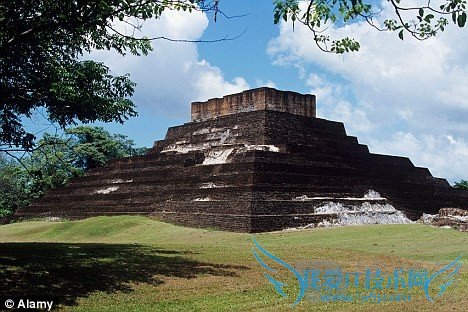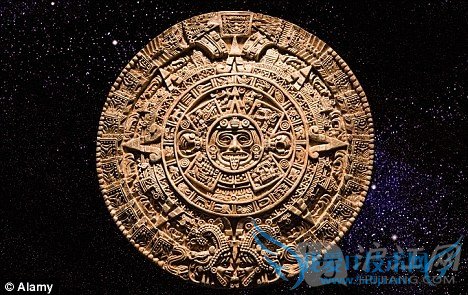��ӭ������52ijӢ��������������С��Ϊ�������Ӣ��֪ʶ�ǣ���Oh My God��2012ĩ��Ԥ����������ש�飡������������ϸ�ķ�����
Oh My God��2012ĩ��Ԥ����������ש�飡
They've done their best in the past to downplay theories that the ancient Mayas predicted some sort of apocalypse would occur in 2012.But archaeologists at Mexico's National Institute of Anthropology and History have admitted that a second reference to the date exists on a carved fragment.Most experts had cited only one surviving reference to the date in Mayan glyphs, a stone tablet from the Tortuguero site in the Gulf coast state of Tabasco.��ȥ��ī���翼�Ż����������Ŭ�����Թ�������Ԥ��2012��������ĩ�յ�˵������ȡ���赭д��̬�ȡ�������ר�������ѳ��ϣ���һ��ש�̲�Ƭ�ϣ��ٴη�������һ���ڡ������ר����ǰ�ᵽ�ģ�����������˹�ƺ���������������ַ��һ��ʯ���ϣ����������������ֿ��µ��Ǹ����ڡ�
The second is an apparent reference at the nearby Comalcalco ruin on the carved or moulded face of a brick. Comalcalco is unusual among Mayan temples in that it was built with bricks.Arturo Mendez, a spokesman for the institute, said the fragment of inscription had been discovered years ago and has been subject to thorough study. It is not on display and is being kept in storage at the institute.�ڣ�����������ַ�������Ŀ���������ַ���ڶ���������һ���ڵ����Լ��أ������ֿ�����һ��ש���ϡ�����������ַ���������������IJ�֮ͬ��������������ש�齨��ġ��о�����һλ������Arturo Mendez˵������ǰ�ͷ��������������ĵIJ�Ƭ����һֱ�ڶ������������о�������û�й���չ����һֱ�����ڸ��о�����

The 'Comalcalco Brick', as the second fragment is known, has been discussed by experts in some online forums.Many still doubt that it is a definite reference to December 21, 2012 or December 23, 2012, the dates cited by proponents of the theory as the possible end of the world.'Some have proposed it as another reference to 2012, but I remain rather unconvinced,' said David Stuart, a specialist in Mayan epigraphy at the University of Texas at Austin.He said the date inscribed on the brick 'is a 'Calendar Round', a combination of a day and month position that will repeat every 52 years'.The brick date does coincide with the end of the 13th Baktun.Baktuns were roughly 394-year periods and 13 was a significant, sacred number for the Mayas. The Mayan Long Count calendar begins in 3114 BC, and the 13th Baktun ends around December 21, 2012.But the date on the brick could also correspond to similar dates in the past, Mr Stuart said.'There's no reason it couldn't be also a date in ancient times, describing some important historical event in the Classic period,' he said.����������ש�顱����Ϊ�ڶ�����֪��Ƭ���ǵ�ר������һЩ������̳չ�����ۡ���������Ȼ������������Ƿ�ָ2012��12��21�ջ�12��23�ա���ĩ�����۵�֧������Ϊ��һ����ܾ�������ĩ�ա�����Щ��������������֤��2012����ĩ�յ���һ֤�ݣ������Ա�ʾ���ɡ��������ÿ���˹��ѧ�о����ű��ĵ�ר�Ҵ�ά��˹ͼ����˵������Ϊש���Ͽ̵���һ��������ѭ������������������·ݣ�ÿ52���ظ�һ�Ρ�ש���ϵ����ڵ�ȷ���13���˶�����(ע�����������400�����ڣ�ÿ��360��)�Ľ���ʱ��һ�£��˶�ԼΪ��ʱ394���һ��ʱ��Σ�13����������������Ҫ����ʥ�����֡������˵������ӹ�Ԫǰ3114�꿪ʼ����ô��13���˶ٴ�Լ��2012��12��21�ս���������˹ͼ����˵��ש���ϵ�����Ҳ���ܶ�Ӧ���ǹ�ȥ��һ�����Ƶ����ڡ���˵����û�����ɷ�����Ҳ�ǹŴ���һ�����ڣ��������ǹŵ�ʱ�ڣ�ע����Դ����Ԫǰ2000��������Ļ�����ʢ������Ԫ200��1000��䣬��ʱ�����ŵ�ʱ�ڣ�ij���ش����ʷ���¼�����
Both inscriptions - the Tortuguero tablet and the Comalcalco brick - were probably carved about 1,300 years ago and both are cryptic in some ways.The Tortuguero inscription describes something that is supposed to occur in 2012 involving Bolon Yokte, a mysterious Mayan god associated with both war and creation.However, erosion and a crack in the stone make the end of the passage almost illegible, though some read the last eroded glyphs as perhaps saying: 'He will descend from the sky.'The Comalcalco brick is also odd in that the molded or inscribed faces of the bricks were probably laid facing inward or covered with stucco, suggesting they were not meant to be seen.��������������ʯ�����ǿ�������ש���ϵ����ģ����ܶ���Լ1300��ǰ���µġ�ij�̶ֳ��ϣ����߶������������ݡ�������������������һЩ�������2012�귢�������飬�����漰��Bolon Yokete�������������У���ս���ʹ�����صģ�һ�����ص����顣Ȼ������ʴ���ú�ʯͷ�ϵ��ѷ��ñ��ĵĽ�β�������Ա��ϣ�����Щ�˶���������ʴ�Ľ�β���ֿ����ǡ������������������������ש��Ҳ�����֮������Ϊש�����ֵ���һ�棬����������Ĩ�����࣬���ⲻ���˿�����

The Institute of Anthropology and History has long said rumours of a world-ending or world-changing event in late December 2012 are a Westernised misinterpretation of Mayan calendars.The institute reiterated that 'western messianic thought has twisted the cosmovision of ancient civilisations like the Maya'.The institute's experts say the Mayas saw time as a series of cycles that began and ended with regularity, but with nothing apocalyptic at the end of a given cycle.Given the strength of internet rumours about impending disaster in 2012, the institute is organising a round table of 60 Mayan experts next week at the archaeological site of Palenque, in southern Mexico, to 'dispel some of the doubts about the end of one era and the beginning of another in the Mayan Long Count calendar'.��������ѧ����ʷ�о���һֱ���ƣ��й�2012��12�µ�Ϊ����ĩ�յ�ҥ��������������������������о������꣬�������ľ�����˼�룬Ť�������������ȹŴ�����������ۡ����о�����ר����˵����������Ϊʱ����һ��ϵ�е����ڣ��й��ɵؿ�ʼ�ͽ�������ij�����ڵĽ���������ζ���κ�Ԥ�������������Ϲ���2012���Ѽ������ٵ�ҥ������ǵأ��о������ܽ���֯һ������60λ�����������о�ר�Ҳμӵ�Բ�����顣������齫��ī�����ϲ������˾��У�Ŀ���ǡ����������ų������У�һ��ʱ��������������һ��ʱ��������ʼ�Ļ��ɡ���
- �����б����������۽������ѱ�����˿���������������վͬ����۵��֤ʵ��������
-
